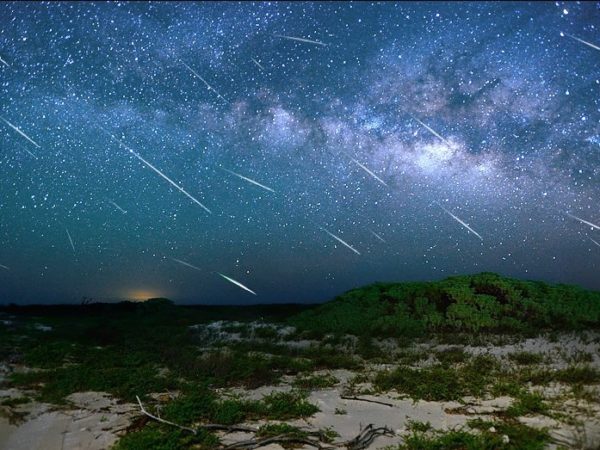
 Look up and look out for a Halley’s Comet meteor shower. Skywatchers are in for a treat this week as one of the most impressive meteor showers, this one coming from Halley’s Comet, will rain down on Earth on Friday and Saturday.
Look up and look out for a Halley’s Comet meteor shower. Skywatchers are in for a treat this week as one of the most impressive meteor showers, this one coming from Halley’s Comet, will rain down on Earth on Friday and Saturday.
The Eta Aquarid meteor shower occurs every year between April 22 and May 20, with up to 30 visible meteors to be seen every hour (shooting stars, to us laypeople). The shower’s peak will occur in North America in the hours before dawn on May 6.
Best viewed from the Southern Hemisphere but still visible up north in the United States and Canada, the Eta Aquarid is named after its “radiant,” that point in the sky where, to us on Earth, the shooting stars seem to be coming from. These meteors will appear to have the constellation Aquarius as its source — more specifically, the radiant is near the star Eta within Aquarius. The Eta Aquarids are known to be the best meteor shower of the year in the Southern Hemisphere, whereas the Perseid meteor shower of mid-August is the reigning favourite in the Northern Hemisphere.
Halley’s comet meteor shower
Meteor showers occur when the Earth’s orbit passes through a trail of debris left behind by a comet. When these particles burn up in our atmosphere, they make those bright flashes of light. While the Perseids have the comet Swift-Tuttle as their source, Halley’s Comet gives us Eta Aquarid.
That most famous of periodic comets, the orbit of Halley’s Comet brings it around to Earth every 75-76 years, last appearing in 1986 and projected to make its next appearance in 2061. Until then, we’ll have to make due with the Eta Aquarid display made by Halley’s leftovers.
While originally associated with the comet’s orbit, the Eta Aquarids broke off from Halley’s path long ago, says Bill Cooke of NASA’s Meteoroid Environment Office to Space.com. “All meteors move off the track of the comet orbit,” Cooke said. “When they come off the comet, they are at a slightly different speed, and that changes the orbit a bit … Other things besides gravity mess with it,” such as radiation pressure and even interplanetary gas,” Cooke says.
When a comet’s orbit brings it close to the Sun, the warming of the big ball of ice and rock causes the formation of a cloud or coma around the comet as well as a tail, sometimes visible from Earth.
Sightings of Halley’s Comet have been traced to at least 273 BC. Historians surmise that it was present in the sky during the Battle of Hastings in 1066. But it wasn’t until 1705 when English astronomer Edmond Halley determined that the comet’s orbit was periodic, bringing it around to Earth every 75 years.
Two comets have already paid visits to Earth this year, Comets 41P and 45P. 41P came within 56 lunar distances of Earth on April 1, while 45P came as close as 31 lunar distances on February 11. NASA scientists use these fly-bys as an opportunity to study the composition of comets without having to launch a spacecraft.
Leave a Reply
You must be logged in to post a comment.



 Share
Share Tweet
Tweet Share
Share




Comment